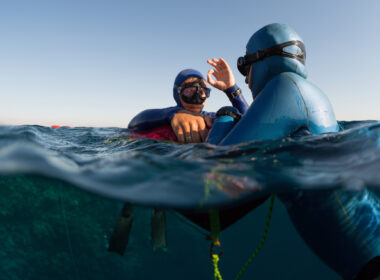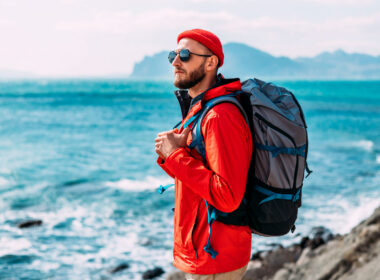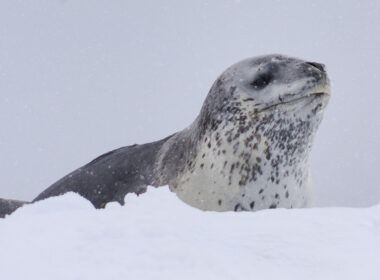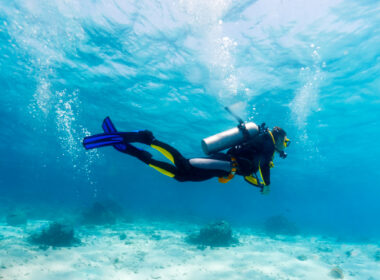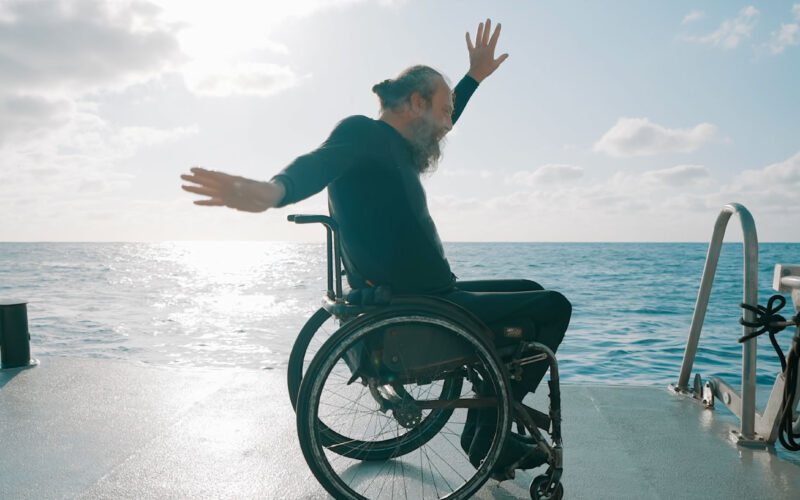Jo’s story is a testament to the power of determination and the ability to overcome challenges. Can you imagine the challenge to overcome diving Socorro in a wheelchair?
The below video is shot in the Revillagigedo Archipelago in the Pacific Ocean. This region consists of four volcanic islands bursting with large pelagic animals. Jo was diving Socorro aboard the Nautilus Explorer, one of the finest liveaboards out there, operated by our dear friend Mike Lever, a loyal DiveAssure partner for many years.
Jo is a unique individual, he has always been passionate about exploring the outdoors and experiencing new adventures. After a motorcycle accident left him with a spinal cord injury, he went even deeper with his passion for diving and doing badass things, like diving with giant oceanic mantas. See for yourselves here:
Scuba diving Socorro is an exhilarating sport that offers the unique experience of exploring the underwater world. For those who are physically disabled, scuba diving can be an even more transformative experience, as it offers a sense of freedom and weightlessness that is often unavailable on land. Despite the challenges of being a scuba diver with a physical disability, many individuals have overcome their limitations and found great success in this sport.
As challenging as diving in the middle of the pacific ocean with a disability sounds, we were all surprised by how agile Jo was in the water and how, after a few tries, the process of getting in and out of the water actually went quite smoothly.
The Revillagigedo Islands
Just over 500 km off the coast of Baja California, four islands comprising the Revillagigedo islands can be found: Socorro, Roca Partida, Clarion and San Benedicto.
This Archipelago has been protected since 1994, when Mexico declared it as a biosphere reserve. Initially, only six nautical miles around the islands were protected and the rest of the waters were still subject to commercial and big game fishing.
During the “Our Ocean Conference” in Malta 2017, a decision was made to expand the marine reserve, which now extends over 148,000 square kilometers and is the largest protected marine reserve in all of North America.
Typical pelagics that you might find here include oceanic manta rays, tuna, humpback whales, whale sharks, hammerhead sharks and silky sharks. The Revillagigedo Islands are often called the “Galápagos of México”.
Protect yourself when on an adventure such as Diving Socorro
Diving in Socorro
The Revillagigedo Islands are more commonly known as the Socorro Islands, Socorro being the largest of the four. Diving here can only be reached by liveaboard due to its remote location, there are liveaboard trips for most price ranges from budget to super luxury. While some companies require a minimum level of experience, due to the harsh conditions, fast currents and high waves, other liveaboard companies will take divers with little to no experience. This is something to bear in mind when booking.
A typical liveaboard trip to the Socorro Islands is usually 8 to 9 days as 2 full days are non-diving days, taken up by driving to and from the islands.
The diving is rugged, with rocky structures and huge walls under the water, filled with coral life. You’lll dive different areas of the archipelago where you can have good chances of diving with manta rays, sharks, large game fish and different species of sea turtles.
Discover more fantastic diving destinations in Mexico with our Blog about Baja California
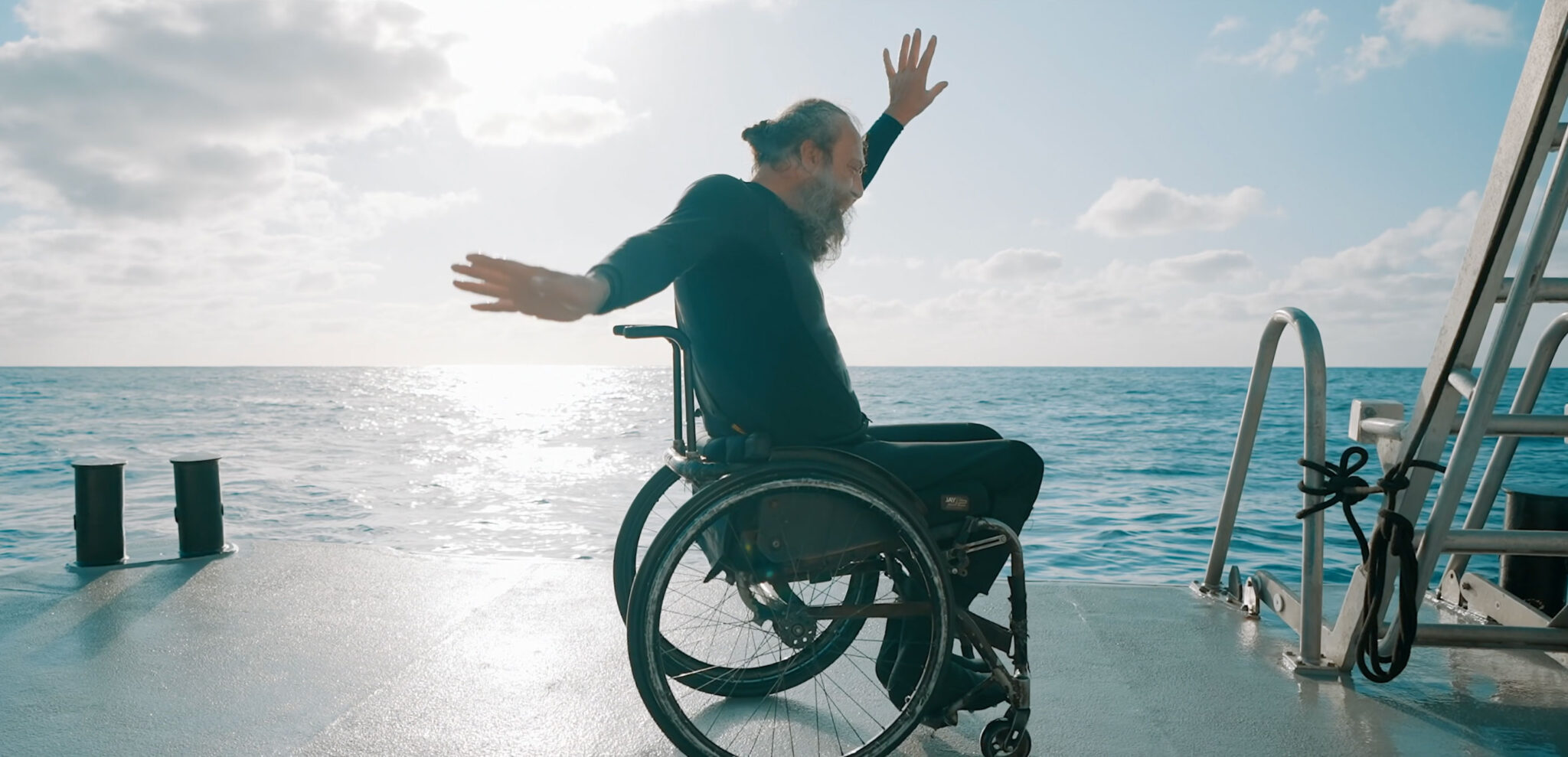
Diving Socorro with a disability
Many people may think that if you have a certain disability you can’t scuba dive, full stop. That is often not the case, as long as you can pass a diving medical “fit to dive” there is no reason why you shouldn’t be able to at least try scuba diving with the right professional training.
Despite the challenges, many people with physical disabilities have found scuba diving to be a liberating and transformative experience. You often hear how such individuals love the feeling of weightlessness and the freedom to explore the underwater world on their own terms. Giving them a sense of independence that they may not experience on land.
We hope that Jo’s story and this beautiful tribute by our partners at Behind the Mask and Nautilus Explorer, will inspire others with physical disabilities to pursue their passions and never give up on their dreams.
Many diving organizations offer a specialized training program for divers with a disability. Our partners at SSI have what is called their Classified Diving Program with various levels, which provides adaptive training for students with limited mobility and/or sensory disorders. Same goes for Disabled Divers organization in the US.
Through such programs, individuals with disabilities who are medically cleared by a physician can experience the thrill of scuba diving. This training will always start in a pool/confined water environment, before possibly moving into the open water.
Scuba diving is often used as a therapy for people with disabilities, offering a sense of freedom, improving muscle tone and strength, improving self-esteem and transporting you to a realm “without” gravity.
Not only is it a great physical activity, but scuba diving has been known to lessen symptoms of depression, anxiety as well as have a positive impact on mood.
We recommend
In conclusion, scuba diving is a sport that can be enjoyed by individuals with physical disabilities, provided that you have the proper adaptive equipment, specialized training and obviously, suitable insurance coverage. Diving Socorro Islands or somewhere just as challenging takes more planning and you should always be honest with the trip organiser and ask them what they are able to make happen.
Are you going diving locally, or off of a remote island in the wild waters of the pacific ocean?
Whether you have a disability, sensory disorder, or not, we would recommend to anyone going diving for their first time or 1000th time to maintain a valid premium diving accident insurance.
Our diving accident plans and diving and travel plans may cover you despite having pre-existing conditions*, as long as you have received a medical fit- to- dive letter from a certified diving physician.
*Note: You will not be covered for any treatments required for your pre-existing conditions. For our full description of coverage, click here for DiveSafe or here for our Dive & Travel programs.


